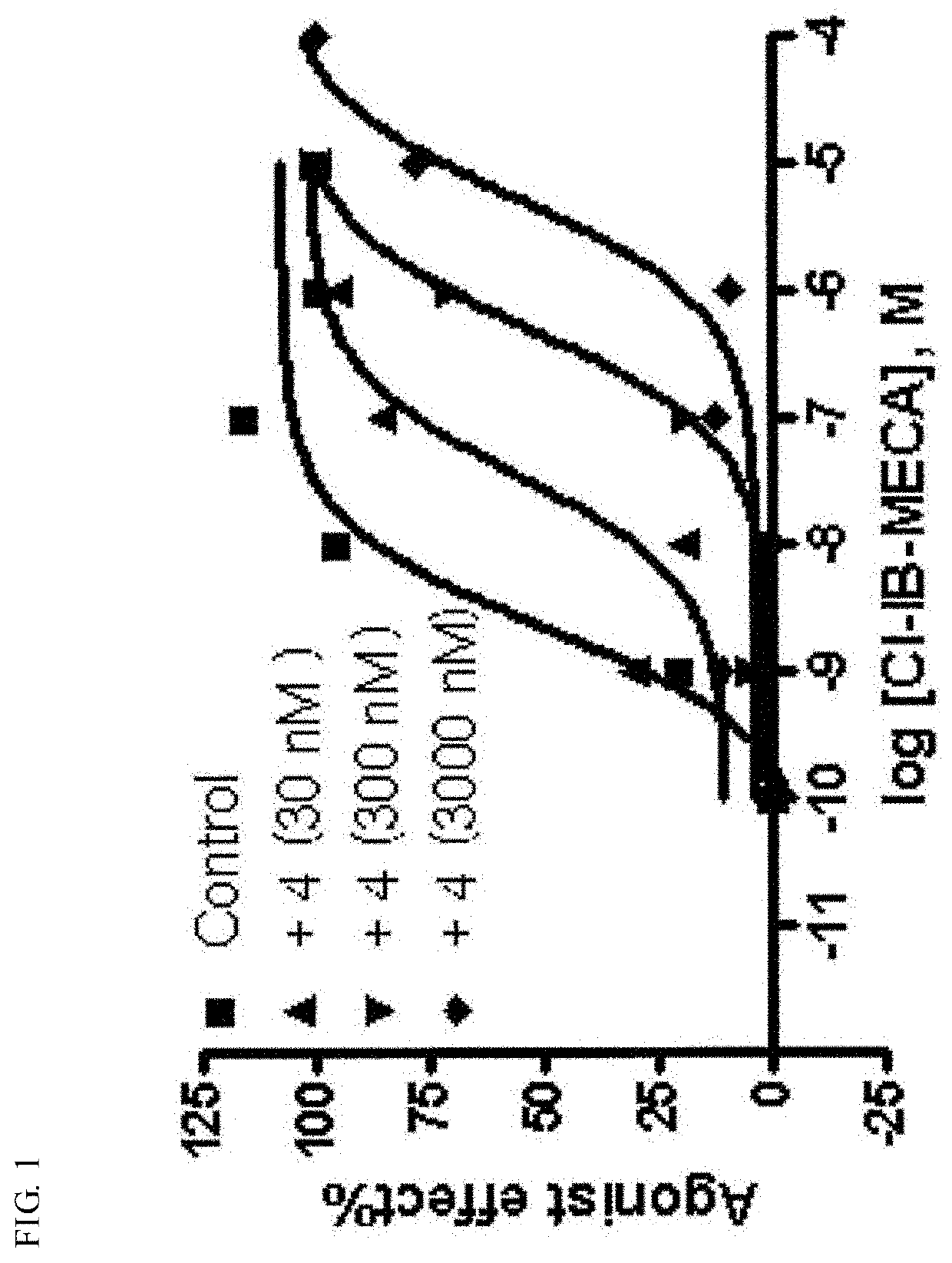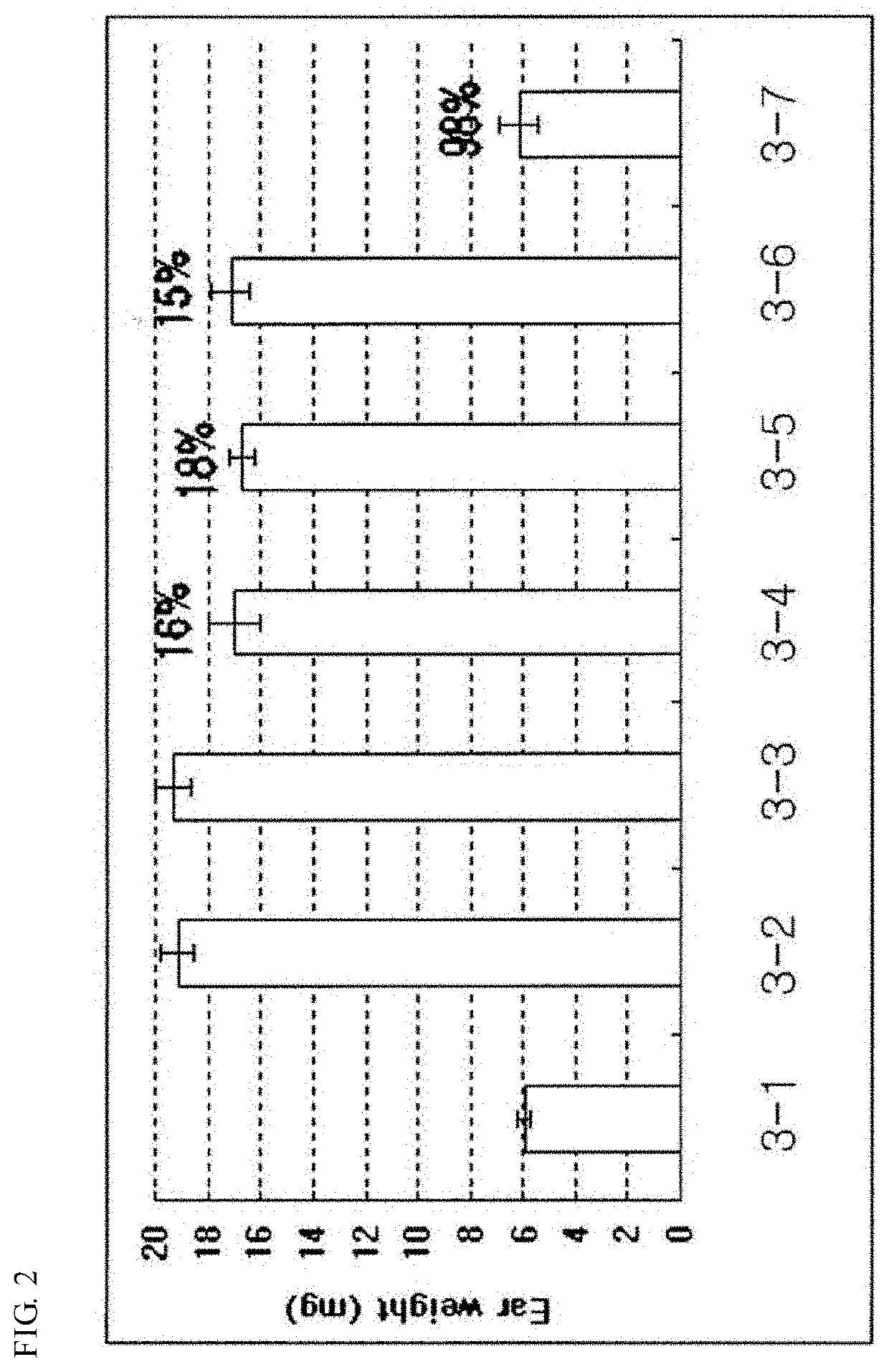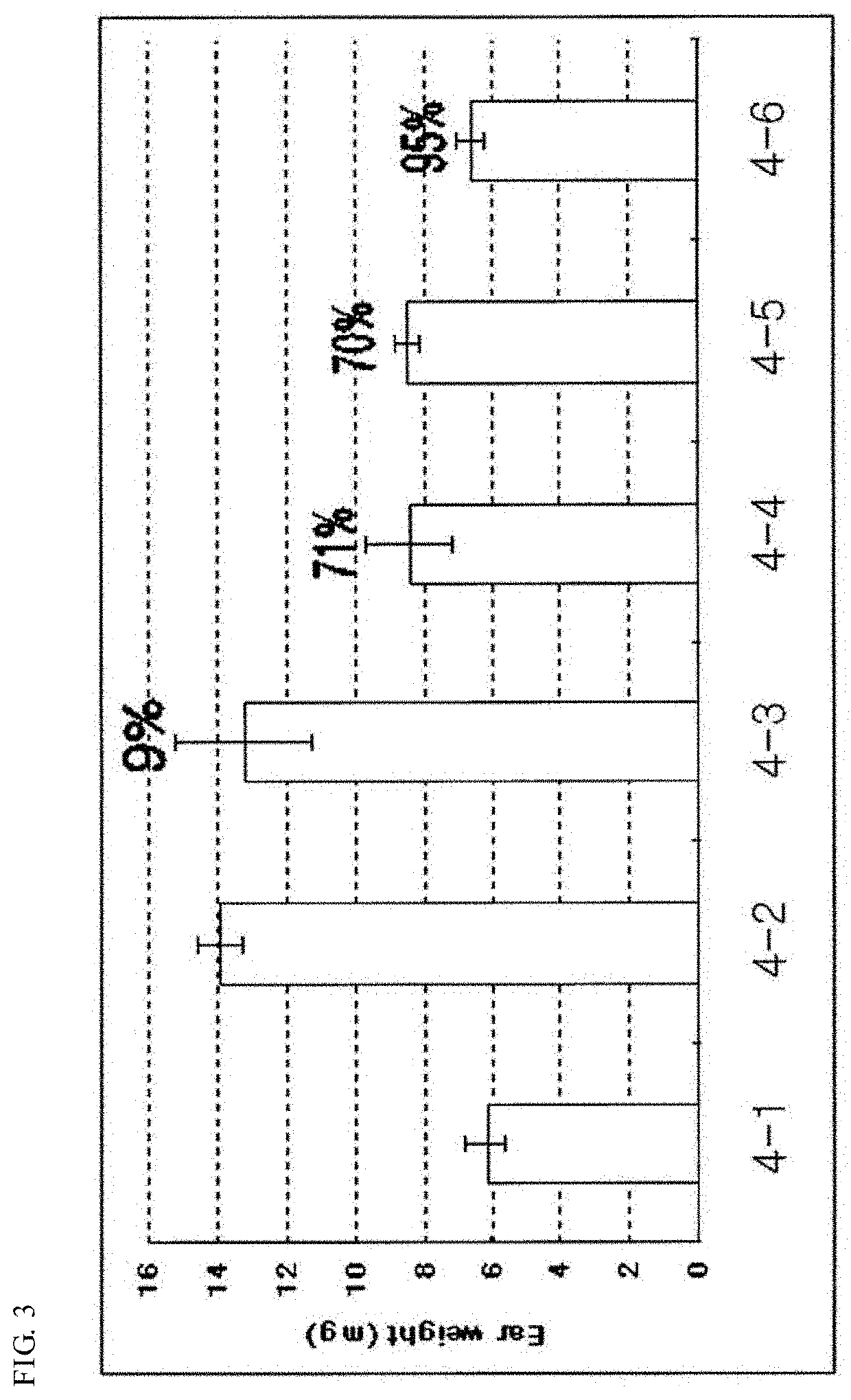Pharmaceutical composition for preventing and treating nonalcoholic steatohepatitis, hepatic fibrosis, and liver cirrhosis, comprising adenosine derivatives
- Summary
- Abstract
- Description
- Claims
- Application Information
AI Technical Summary
Benefits of technology
Problems solved by technology
Method used
Image
Examples
preparation example 1
Preparation of (3 aR,4R,6aS)-2,2-dimethyltetrahydrothieno[3,4-d][1,3]dioxol-4-yl acetate
Step a1. Preparation of (3aR,4R,6R,6aR)-6-(2,2-dimethyl-1,3-dioxolan-4-yl)-2,2-dimethyl-tetrahydrofuro[3,4-d][1,3]dioxol-4-ol
[0128]To acetone (50 ml) were added D-mannose (1.74 g, 6.52 mmol) and 2,2-dimethoxypropane (2.45 ml, 19.55 mmol) with stirring, followed by cooling the solution to 0° C. To the solution was dropwise added conc. sulfuric acid (0.45 g, 1.96 mmol). The resulting reaction mixture was stirred at room temperature for 24 hrs, followed by neutralization with triethylamine and concentration in a vacuum. The concentrate was purified by silica gel column chromatography using a mixture of hexane:ethyl acetate (1:1, v / v) as an elution solvent to afford the object compound as a white solid (1.61 g, 95%).
[0129]m.p. 120.3-120.5° C.
[0130]1H-NMR (CDCl3) δ 5.34 (s, 1H), 4.76-4.79 (m, 1H), 4.58 (d, 1H, J=6.0 Hz), 4.34-4.39 (m, 1H), 4.15 (dd, 1H, J=3.6, 7.2 Hz), 4.00-4.08 (m, 2H);
[0131][α]25D 1...
preparation example 2
Preparation of (3aS,4S,6aS)-2,2-Dimethyl-tetrahydrofuro[3,4-d][1,3]dioxol-4-yl acetate
Step b1. Preparation (3aR,4R,6aR)-2,2-dimethyl-tetrahydrofuro[3,4-d][1,3]dioxol-4-ol
[0153]2,3-O-isopropylidene-D-erythronolactone (1.04 g, 6.42 mmol) was dissolved in toluene (20 ml), followed by the addition of 1 M diisobutylaluminium hydride (DIBAL) / THF to the solution at −78° C. The reaction mixture was stirred at the same temperature for 30 min and methanol was slowly added until the reaction terminated. The suspension was filtered through a Celite filter and the filtrate was extracted with ethyl acetate and water, followed by silica gel column chromatography using a mixture of hexane:ethyl acetate (3:1, v / v) to give the object compound in syrup form (1.94 g, 96%).
[0154]1H-NMR (CDCl3) δ 5.39 (s, 1H), 4.82 (dd, 1H, J=3.6, 6.0 Hz), 4.55 (d, 1H, J=6.0 Hz), 4.05 (dd, 1H, J=3.6, 10.2 Hz), 4.00 (d, 1H, J=10.0 Hz), 1.45 (s, 3H), 1.30 (s, 3H).
Step b2. Preparation of (3aS,4S,6aS)-2,2-dimethyl-tetrahydro...
example 1
Synthesis of (2R,3R,4S)-2-(2-Chloro-6-(3-fluorobenzylamino)-9H-purin-9-yl)tetrahydrothiophen-3,4-diol
Step 1. Preparation of 2,6-dichloro-9-((3aR,4R,6aS)-2,2-dimethyltetrahydrothieno[3,4-d][1,3]dioxol-4-yl)-9H-purine
[0157]A solution of 2,6-dichloropurine (2.29 g, 22.12 mmol) and ammonium sulfate (438 mg, 3.32 mmol) in hexamethyldisilazane (HMDS, 50 ml) was fluxed overnight under inert, dry conditions. The resulting reaction mixture was concentrated in a vacuum and the solid mixture thus formed was re-dissolved in cold 1,2-dichloroethene (20 ml). To this solution were dropwise added a solution of (3aR,4R,6aS)-2,2-dimethyltetrahydrothieno[3,4-d][1,3]dioxol-4-yl acetate (1.41 g, 11.06 mmol), obtained in Preparation Example 1, in 1,2-dichloroethane (20 ml), and then trimethylsilyl trifluoromethanesulfonate (TMSOTf, 4.0 ml, 22.12 mmol). The resulting solution was stirred at 0° C. for 30 min and then at room temperature for 1 hr, and heated at 80° C. for 2 hrs with stirring. The reaction m...
PUM
| Property | Measurement | Unit |
|---|---|---|
| Volume | aaaaa | aaaaa |
| Volume | aaaaa | aaaaa |
| Volume | aaaaa | aaaaa |
Abstract
Description
Claims
Application Information
 Login to View More
Login to View More - R&D
- Intellectual Property
- Life Sciences
- Materials
- Tech Scout
- Unparalleled Data Quality
- Higher Quality Content
- 60% Fewer Hallucinations
Browse by: Latest US Patents, China's latest patents, Technical Efficacy Thesaurus, Application Domain, Technology Topic, Popular Technical Reports.
© 2025 PatSnap. All rights reserved.Legal|Privacy policy|Modern Slavery Act Transparency Statement|Sitemap|About US| Contact US: help@patsnap.com



